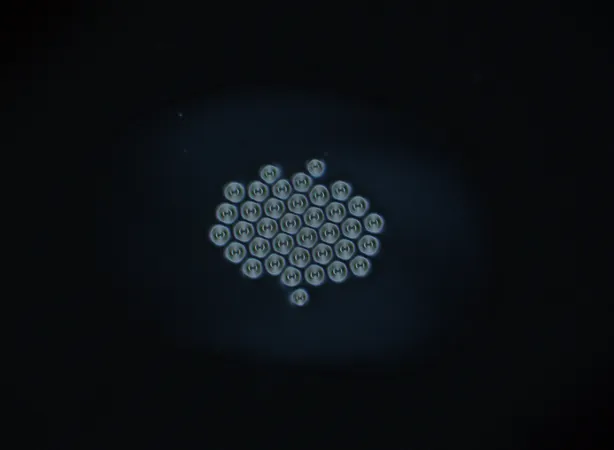
Breakthrough Study Reveals How Certain Animals Regenerate Hearing – Could It Help Us Too?
2024-12-09
Author: Emma
A groundbreaking study from USC Stem Cell, recently published in the Proceedings of the National Academy of Sciences, has unveiled crucial genetic mechanisms that allow certain animals, such as fish and lizards, to regenerate their hearing after damage. This incredible discovery paves the way for future treatments aimed at stimulating similar regenerative processes in humans suffering from hearing loss or balance disorders.
The research, spearheaded by Tuo Shi alongside Ksenia Gnedeva and Gage Crump at the Keck School of Medicine, centers on the inner ear's sensory and supporting cells. In unique regenerative species, supporting cells can transform into replacement sensory cells following injury, a remarkable ability that humans and other mammals lack.
To unravel the secrets behind this regenerative phenomenon, the team examined how specific genes, typically found in sensory cells, can be reactivated in supporting cells within these animals. They conducted a detailed analysis of the gene organization in the inner ears of zebrafish and green anole lizards. By comparing these findings to the genomes of non-regenerative species like mice, researchers identified fundamental differences that explain why some vertebrates can regenerate hearing.
"By comparing two different regenerative vertebrates, zebrafish and lizards, to non-regenerative vertebrates such as mice, we found something fundamental regarding how sensory cells can be replaced to restore hearing," said Crump, a professor in the Department of Stem Cell Biology and Regenerative Medicine at USC.
The scientists discovered a category of DNA control elements, known as "enhancers," that play a vital role after injury. These enhancers boost the production of a protein called ATOH1, which is crucial for generating sensory cells in the inner ear.
Utilizing CRISPR gene editing technology, the researchers deleted five enhancers in zebrafish. This intervention hampered the development of sensory hearing cells and their ability to regenerate after sustaining damage. Crump notes, "In the past, deleting individual enhancers often yielded minimal effects. However, by targeting all five enhancers, we uncovered their significant roles in both development and regeneration."
Interestingly, the genetic deletion only affected the inner ear cells, despite zebrafish possessing similar sensory cells in their lateral line system, which detects water flow and pressure.
Moreover, the study revealed that mice possess similar enhancers that are active during early embryonic development, contributing to the generation of inner ear cells. However, only regenerative species such as fish and lizards keep these enhancers open in supporting cells throughout their lives, maintaining their potential to replace damaged sensory cells.
The implications of this research are profound. "We found that sister cell types in regenerative vertebrates maintain open enhancers from development into adulthood, allowing them to replace one another after damage," stated Crump. This breakthrough suggests that using targeted strategies to activate these enhancers in human inner ears might enhance natural regeneration capabilities and potentially reverse deafness.
As medical science continues to evolve, this study holds promise for innovative treatments that could transform the lives of millions with hearing impairments. Could we one day harness the regenerative powers of fish and lizards to restore hearing in humans? The future is bright, and researchers are on the cusp of making the impossible, possible!









 Brasil (PT)
Brasil (PT)
 Canada (EN)
Canada (EN)
 Chile (ES)
Chile (ES)
 España (ES)
España (ES)
 France (FR)
France (FR)
 Hong Kong (EN)
Hong Kong (EN)
 Italia (IT)
Italia (IT)
 日本 (JA)
日本 (JA)
 Magyarország (HU)
Magyarország (HU)
 Norge (NO)
Norge (NO)
 Polska (PL)
Polska (PL)
 Schweiz (DE)
Schweiz (DE)
 Singapore (EN)
Singapore (EN)
 Sverige (SV)
Sverige (SV)
 Suomi (FI)
Suomi (FI)
 Türkiye (TR)
Türkiye (TR)